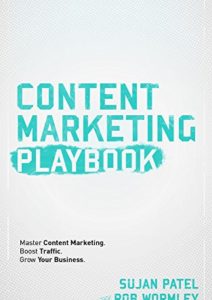Email inboxes are coveted real estate. Every day, consumers are bombarded with promotional emails sent by marketing and sales professionals hoping to get an open or a click. Yet, only 24% of sales emails are opened, and the average person deletes 48% of the emails they receive each day.
With 205 billion emails sent daily (and expected to reach 246 billion by the end of 2019), overcrowding and oversaturation are making it harder and harder for sales reps to get their messages heard.
But many sales professionals don’t know how to use email effectively. 38% of them say getting a response from prospects is getting harder. That’s because you aren’t just competing with other businesses for your consumers’ attention, you’re competing with their personal network as well. So how do you break through the noise and stand out?
With 1 million sales reps predicted to be out of a job by 2020, it’s time you learned how to leverage email for sales. Here are 5 tips to help you make better use of email to drive sales:
1. Research prospects in advance
More than 40% of salespeople say prospecting is the most challenging part of the sales process. But prospecting is an essential part of any outreach – including and especially email. You don’t want to send an email to just any contact – and you especially don’t want to send mass emails.
Prospects prefer personalized email, so the more you can make your email sound warm, friendly, and human – not robotic and salesy – the better. Cold emails don’t have to be cold.
That email list you have? It’s probably full of leads that are a waste of time and will never buy from you. To ensure the highest chance of success, you need to do your research and scrub your list to weed out the contacts that you shouldn’t be sending to.
Go beyond just gathering a list of names and contact details. Anybody can find that information. Take the time to make sure you’re sending to the right people. In this case, more is not always merrier.
Dig deep to uncover your prospects’ interests, skills, hobbies, and more. What are their needs? What are their biggest pain points and how can you solve them?
2. Offer real value
One of the biggest mistakes salespeople make is sending emails that are all about them, when it should be all about the prospect. If you don’t appeal to some need or desire in your emails to prospects, you’ll be ignored, deleted, or, even worse – unsubscribed.
Once you’ve done your research, you have all the pieces to the puzzle – now you just need to put them together. And that means figuring out how you can solve those pain points you uncovered.
According to buyers, the number one way to create a positive sales experience is to listen to the buyer’s needs. A survey by The RAIN Group Center for Sales Research found that the biggest factor in whether prospects connect with salespeople is a need for their product or service. It sounds obvious, but you’d be surprised by how many ignore this fact.
You don’t want to just shoot in the dark. If you focus on the prospect’s needs, your message will be more likely to resonate. And that means you need to demonstrate just how you can meet their needs.
When asked what sales professionals can provide in their emails to better add value, these were the top answers:
- Primary research data relevant to their business (69%)
- Descriptions of the provider’s capabilities (67%)
- Content 100% customized to their specific situation (67%)
It all goes back to doing your research. You can’t add value within your emails if you don’t understand your prospects and what they need.
3. Keep it short and sweet
The human attention span is now just eight seconds, shorter even than that of a goldfish. That means you have a very small window in which to grab your prospect’s attention and ensure they hear your message.
In addition, about 53% of emails are opened on mobile devices. Lengthy, text-heavy emails just aren’t going to cut it. You need to keep things short and to the point. Otherwise, you’ll risk losing your prospect’s attention. And keeping their attention is much more difficult than losing it.
The language you use in your email plays a big part in how attentive the reader will be to your message. According to a survey by Boomerang, emails should be written at a third-grade reading level, with the optimum length for email copy coming in at 50-125 words.
Your subject line is the first place where you have the opportunity to grab the reader’s attention and encourage them to open the email. Be extra cautious with the words you use, because the wrong ones could drive the reader away. Here are the most effective words to use in an email subject line:
- Demo
- Connect
- Cancellation
- Apply
- Opportunity
- Conference
- Payments
The best thing you can do is keep things simple and easy to read, and make your message as clear as possible.
4. Define your goals
Emailing your prospects just to email them is pointless. Without a focused purpose, how will you define success? You need to have a clear idea of what you want to get out of each email that you send.
Whether it’s a sales email, marketing email, or product message, all types of promotional emails have one thing in common: a defined goal.
As a sales professional, you already have sales goals that you need to meet, so why should your emails be any different?
Figuring out what the purpose of your email is shouldn’t be difficult. You just need to ask yourself why you’re sending it. Is it to start a dialogue? Great, make your email informative and educational. Looking to close a deal? Then make sure your call-to-action is crystal-clear.
Your prospects shouldn’t have to search for the call-to-action in any email, either – no matter what the goal is. Make sure you’re clear on what the prospect’s next steps should be. You don’t want to leave it up to the prospect to figure it out on their own. Lead them to the path you want them to take.
5. Always follow up
Sending one single email probably isn’t going to result in a sale. You need to nurture prospects as they make their way through the sales funnel, and that means reaching out to them more than once.
And maybe it isn’t a question of whether or not you’re following up, but if you’re following up enough.
According to HubSpot, 44% of sales professionals give up after following up just one time. Yet 80% of sales require at least five follow-ups.
Our instincts tell us that if we send an email and hear no response, then that prospect probably isn’t interested. But that’s just not true. A study by Iko System found that while the first email in a sequence received an 18% response rate, the sixth email received a 27% response rate. That’s a big difference!
If you’re neglecting to follow up, or just sending one follow-up, you’re missing out on possible opportunities. You need to stay on your prospects’ radar by continuing to send engaging emails full of valuable content. Eventually, it will pay off.












Comments